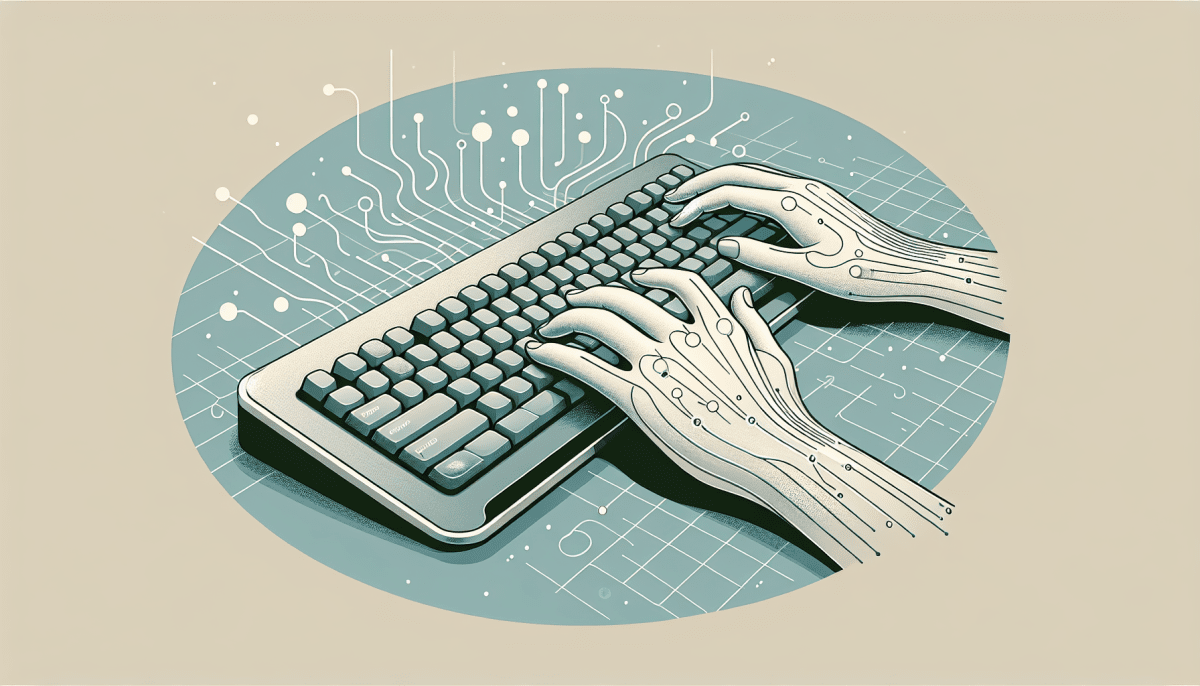Finding the right keyboard position can make a big difference in your comfort while you work. You want to keep your wrists straight and your hands relaxed. A good starting point is to have your keyboard at elbow height, so your arms can sit comfortably by your sides.
Try to position your keyboard so that your hands hover just above it. This way, you’re not straining your wrists or stretching too far. If your chair isn’t adjustable, consider using a keyboard tray. It gives you that extra flexibility to find a spot that feels just right.
Don't forget about your posture! Sit up straight with your back supported, and keep your feet flat on the floor. This can make typing feel a lot easier. If you feel any strain, it might be time for a quick stretch or maybe even a break to walk around.
Finally, everyone is different. Experiment with slight adjustments until you find what feels best for you. Small changes can lead to big improvements in your overall comfort during long typing sessions!
Types of Ergonomic Keyboards Available
There are a few types of ergonomic keyboards out there, and each one has its unique features. Let's break them down so you can find the perfect fit for your workspace.
Split Keyboards: These keyboards are designed to keep your hands in a more natural position. Instead of all the keys being on one flat surface, split keyboards separate the keys into two parts. This helps reduce wrist strain and allows for a more comfortable typing angle. If you often find yourself in a weird position while typing, a split keyboard might be your best buddy.
Tented Keyboards: Tented keyboards take things a step further by raising the middle section of the keyboard. This design promotes a more natural wrist position. Basically, your hands sit at a slight angle instead of lying flat, which can make a noticeable difference in comfort.
Mechanical Ergonomic Keyboards: If you love that satisfying click and great tactile feedback, mechanical ergonomic keyboards are right up your alley. They combine the benefits of an ergonomic design with mechanical switches. You'll get that snappy response, plus your wrists will feel more relaxed during long typing sessions.
Compact Ergonomic Keyboards: Space is often a concern in a home office, and compact ergonomic keyboards address that. They’re smaller, have a reduced footprint, and still offer great support. They might lack a number pad, but if you don’t use one frequently, compact options save you desk space while keeping comfort in mind.
Key Features to Consider When Buying
When you're looking for an ergonomic keyboard, there are a few key features that can really make a difference in your comfort and typing experience. First up, check the layout. Many ergonomic keyboards come with a split design that allows your wrists to stay at a natural angle. This can help prevent strain during long hours at the computer.
Next, consider the key switches. You’ll find different types like mechanical or membrane switches, each offering its own feel and sound. Mechanical keyboards often provide a satisfying click and tactile feedback, while membrane keyboards tend to be quieter and softer. Think about what feels best for you, as it can really change your typing experience.
Don’t forget about wrist support. Some ergonomic keyboards come with built-in wrist rests, which can help keep your wrists in a comfortable position. If the keyboard doesn’t have one, you might want to grab a separate wrist pad. It’s a small addition that can go a long way in reducing discomfort.
Lastly, look for customization options. Some keyboards allow you to program shortcuts or adjust the key sensitivity. If you’re working on specific tasks, having those features can really boost your productivity and make typing feel smoother.
Tips for Using Your New Keyboard
Getting used to your new ergonomic keyboard can take some time, but don’t worry; it’s worth the effort! Here are some tips to help you get the most out of it and boost your comfort.
First things first, take a moment to adjust the height and angle. A good position helps keep your wrists straight and reduces strain. Try tilting the keyboard up slightly or adjusting its height to find what feels best. If your keyboard comes with wrist support, use it! It can make a world of difference.
Practice your typing technique. If you’re used to a flat keyboard, the transition might feel weird at first. Focus on resting your hands lightly on the keys, and keep your fingers relaxed. You’ll find your rhythm before you know it. A little practice goes a long way!
Don't forget to take breaks! Even with an ergonomic keyboard, your hands and wrists need time to recover. Try the 20-20-20 rule: after every 20 minutes of typing, look at something 20 feet away for 20 seconds. It’s great for your eyes and helps reset your posture too.
Finally, customize your keyboard settings if possible. Many ergonomic keyboards come with additional features like programmable keys or backlighting. Take advantage of these options to enhance your typing experience. Set up shortcuts for your most-used functions, and you’ll be amazed at how much easier your work can be.

